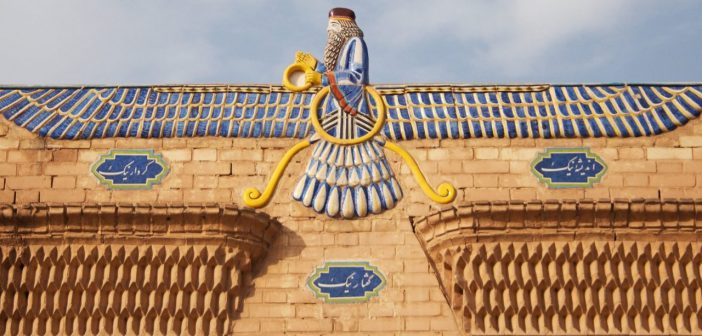Parsi New Year, celebrated on August 16, 2024, has increasingly become a forgotten event in India, overshadowed by the fast pace of modern life and the diminishing Parsi community. Despite the immense contributions of the Zoroastrian community to India’s socio-economic fabric, this ancient festival, known as Navroz, is now often overlooked, reflecting the gradual decline of a vibrant cultural heritage.
The Origins and Significance of Parsi New Year
Navroz, derived from the Persian words ‘nav’ (new) and ‘roz’ (day), marks the first day of the Parsi calendar and is celebrated with fervor by Zoroastrians worldwide. In India, this day is rooted in the Shahenshahi calendar, which dates back to the 7th century when Zoroastrians fled Persia to escape Islamic persecution. The festival is a time of renewal, symbolizing the eternal fight between good and evil, a central theme in Zoroastrianism.
Historically, Parsi New Year was a grand celebration in cities like Mumbai and Surat, where large Parsi populations resided. The festivities involved traditional prayers at fire temples, elaborate feasts, and the community coming together to reinforce their cultural identity. However, in recent years, these celebrations have become muted, and the day passes unnoticed by most Indians.
Contributions of the Parsi Community to India
The Parsi community, despite its small size, has left an indelible mark on India. Their contributions span across various fields, including industry, science, and philanthropy. The Tata family, pioneers of Indian industry, founded the Tata Group, which has become a global conglomerate and a symbol of Indian enterprise. Dr. Homi J. Bhabha, the father of India’s nuclear program, laid the foundation for India’s advancements in atomic energy.
In the realm of philanthropy, the Parsis have set an unparalleled example. The Wadia family, known for their pioneering work in shipbuilding, established numerous educational institutions, while Sir Ratan Tata’s philanthropy supported everything from the Indian Institute of Science to the Tata Memorial Hospital. The community’s ethical business practices and their commitment to social welfare have significantly contributed to India’s development.
The Gradual Decline of Navroz Celebrations
Several factors have contributed to the waning celebrations of Parsi New Year. One of the most pressing issues is the demographic decline of the Parsi community. With a population of around 57,000 in 2021, the community faces a steep decline due to low birth rates and high rates of emigration. This demographic challenge is not just a concern for the Parsis but also for the preservation of their unique cultural and religious practices.
Additionally, the rapid urbanization and the rise of a consumer-driven culture have led to the erosion of many traditional festivals. The younger generation of Parsis, increasingly integrated into global culture, often find themselves disconnected from their roots. As a result, traditional practices like Navroz are at risk of fading into obscurity.
The Need for Cultural Preservation
The diminishing observance of Parsi New Year is symptomatic of a larger issue: the erosion of cultural diversity in India. In a country known for its rich tapestry of cultures and religions, the decline of the Parsi community’s traditions is a significant loss. The preservation of such traditions is crucial not only for the Parsi community but for the cultural heritage of India as a whole.
There is a need for concerted efforts to revive and sustain these traditions. This could involve educational initiatives aimed at raising awareness about the importance of Navroz and other Parsi customs. Schools and universities can play a pivotal role by incorporating lessons on Zoroastrianism and Parsi contributions to India in their curricula. Furthermore, community organizations and government bodies should collaborate to ensure that the significance of Parsi New Year is recognized and celebrated more widely.
The Role of the Indian Government
The Indian government, both at the central and state levels, has a responsibility to support the preservation of the Parsi heritage. This could include providing grants for cultural events, preserving historical sites related to the Parsi community, and promoting Parsi traditions through media campaigns. The government’s involvement would send a strong message about the value of India’s cultural diversity and the importance of preserving its minority communities.
Conclusion: A Call to Action
As India moves forward in the 21st century, it is crucial not to forget the contributions of the Parsi community and the cultural significance of their festivals like Navroz. While the community may be small, their impact on India has been profound, and their traditions are an integral part of the nation’s cultural mosaic.
The decline in the observance of Parsi New Year is a wake-up call for all Indians to recognize and preserve the country’s diverse cultural heritage. By supporting the Parsi community and their traditions, India can ensure that this ancient culture continues to thrive, enriching the nation for generations to come.
Parsi New Year should not just be a date on the calendar but a reminder of the enduring legacy of a community that has given so much to India. It is time for all Indians to embrace and celebrate this heritage, ensuring that Navroz and other Parsi traditions are not lost to time but continue to be a vibrant part of India’s cultural landscape.





